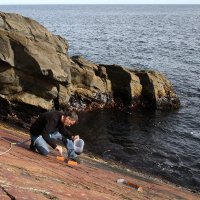
Dr. Rod Taylor
@fossilrod
Science interpreter, palaeontologist, nature lover and music collector.
ID: 3367849041
09-07-2015 16:51:06
2,2K Tweet
1,1K Followers
567 Following














#Trilobites had the ability to recover from non-fatal predation attacks, and regenerate damaged shell with later moults. For #TrilobiteTuesday, this #Cambrian Gabriellus kierorum from BC, Canada had a large chunk bitten off - but appears to be recovering nicely! Image: American Museum of Natural History

















